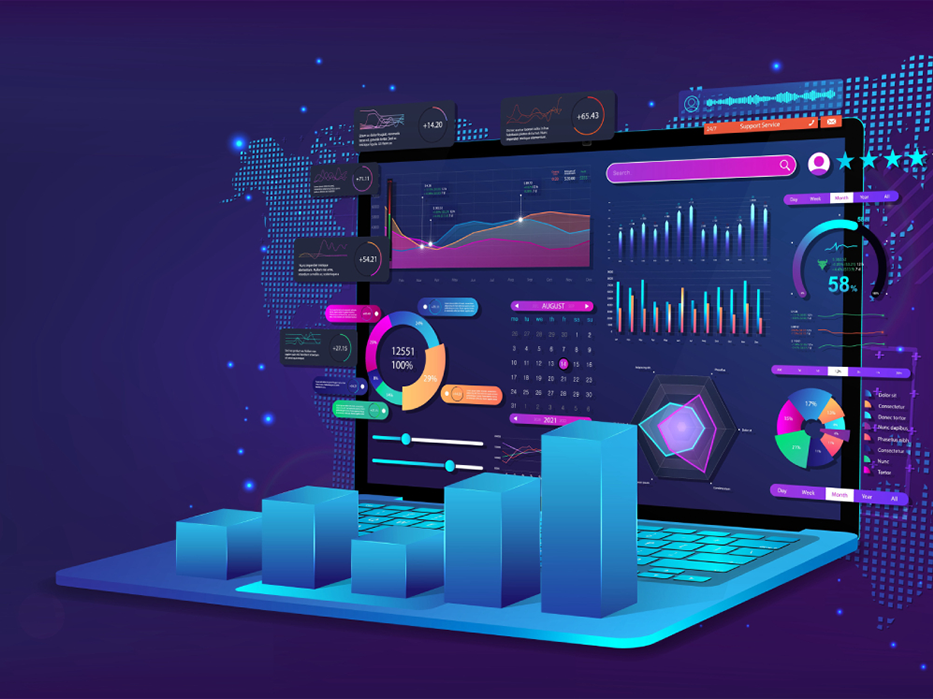Here’s a look at some prominent use cases and benefits:
Use Cases
1. Financial Services:
- Fraud Detection: Financial institutions use real-time analytics to monitor transactions and detect fraudulent activities as they occur. For example, if a credit card transaction is made in a location that’s unusual for the cardholder, the system can flag it for review or block the transaction in real time.
- Market Trading: Traders use real-time data to make split-second decisions in the stock market. Algorithms analyze live market conditions to execute trades at the optimal moment.
2. Healthcare:
- Patient Monitoring: Hospitals use real-time analytics to monitor patients’ vital signs continuously. If a patient’s condition changes suddenly, alerts are generated to ensure immediate intervention.
- Operational Efficiency: Healthcare providers analyze data from various sources, such as patient flows and resource utilization, to improve operational efficiency and patient care.
3. Retail:
- Customer Experience: Retailers use real-time analytics to personalize shopping experiences. For example, they can analyze a customer’s browsing history and purchase patterns to recommend products and offer promotions instantly.
- Inventory Management: Retailers monitor stock levels in real time to manage inventory efficiently, reducing both overstock and stockouts.
4. Transportation and Logistics:
- Fleet Management: Logistics companies use real-time analytics to track vehicle locations, monitor driver behavior, and optimize routes. This helps in reducing fuel consumption and improving delivery times.
- Public Transit: Real-time data on public transportation systems helps in managing schedules, tracking delays, and providing up-to-date information to passengers.
5. Manufacturing:
- Predictive Maintenance: Real-time analytics are used to monitor equipment performance and predict failures before they happen, minimizing downtime and maintenance costs.
- Quality Control: Manufacturers use real-time data from production lines to identify defects and adjust processes instantly to maintain product quality.
6. Telecommunications:
- Network Management: Telecom companies use real-time analytics to monitor network performance, detect outages, and optimize service delivery. This helps in maintaining high service levels and addressing issues before they affect customers.
Benefits
1. Improved Decision-Making:
- Timeliness: The primary benefit is the ability to make decisions based on the most current data. This immediacy helps in responding to issues or opportunities faster than traditional analytics approaches.
2. Enhanced Customer Experience:
- Personalization: Real-time insights allow businesses to tailor their interactions and offers to customers dynamically, enhancing satisfaction and loyalty.
3. Operational Efficiency:
- Optimization: By analyzing data in real time, organizations can optimize operations, such as adjusting supply chains or reallocating resources, to improve efficiency and reduce costs.
4. Risk Management:
- Proactive Measures: Real-time analytics enable organizations to identify and mitigate risks before they escalate, whether it’s fraud in financial transactions or equipment failures in manufacturing.
5. Competitive Advantage:
- Speed: Businesses that leverage real-time analytics can gain a competitive edge by responding faster to market changes, customer needs, and operational challenges.
6. Informed Strategic Planning:
- Agility: Continuous data flow allows for more agile and informed strategic planning, enabling organizations to adapt quickly to evolving trends and conditions.
In summary, real-time analytics offer significant advantages across various sectors by providing immediate insights that drive better decision-making, enhance customer experiences, and improve operational efficiency. As technology continues to advance, the scope and impact of real-time analytics are likely to expand even further.





